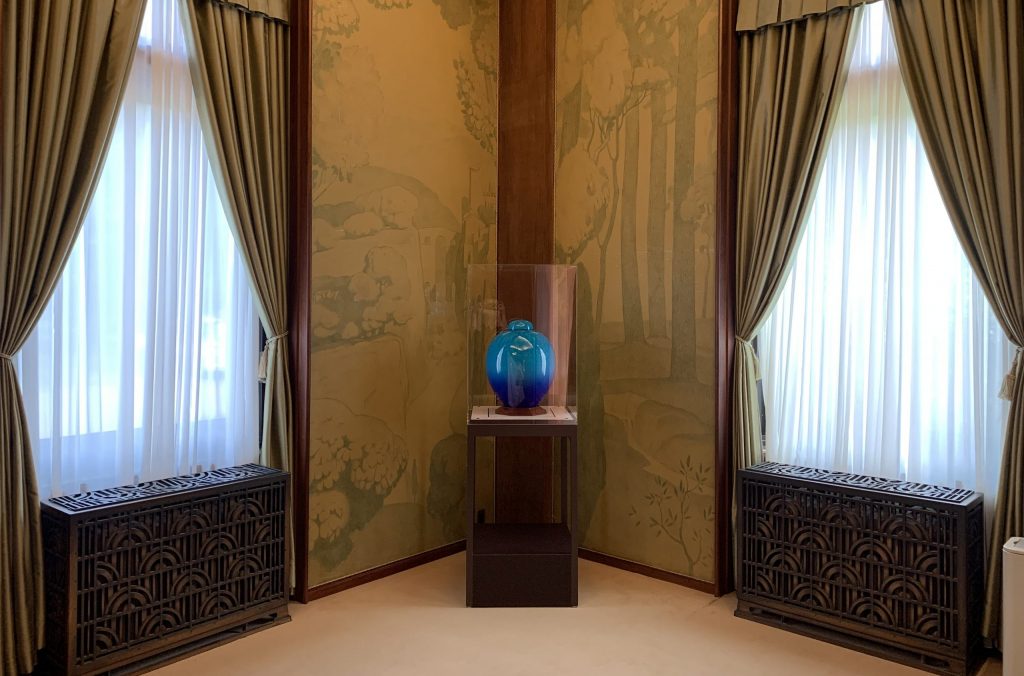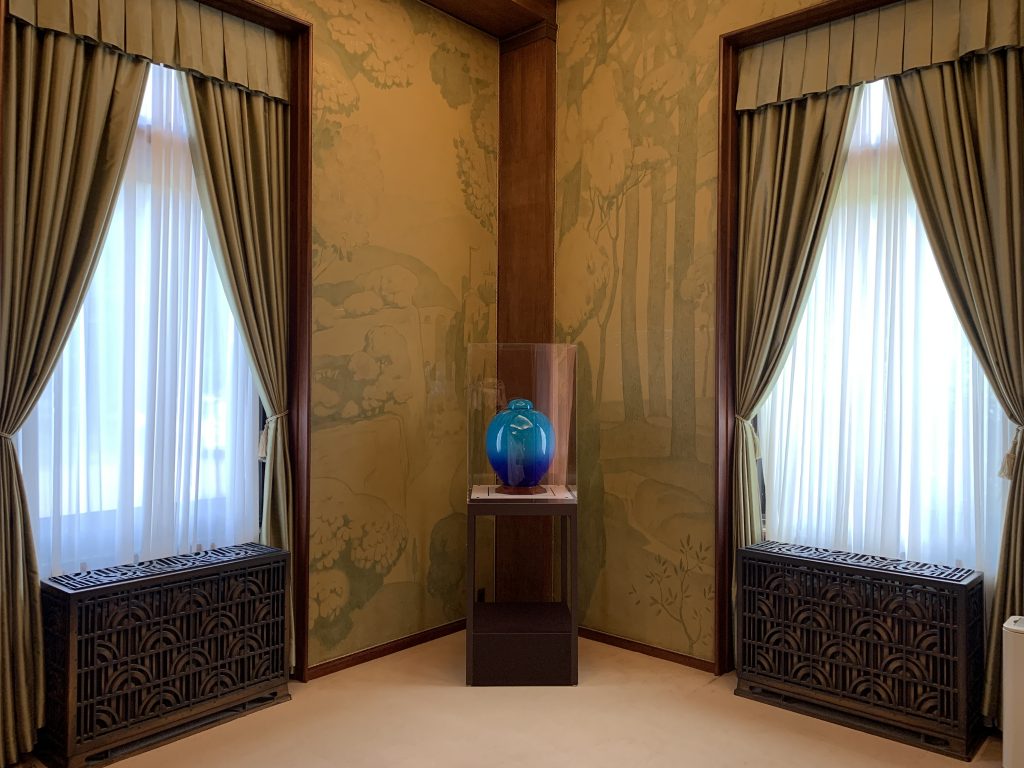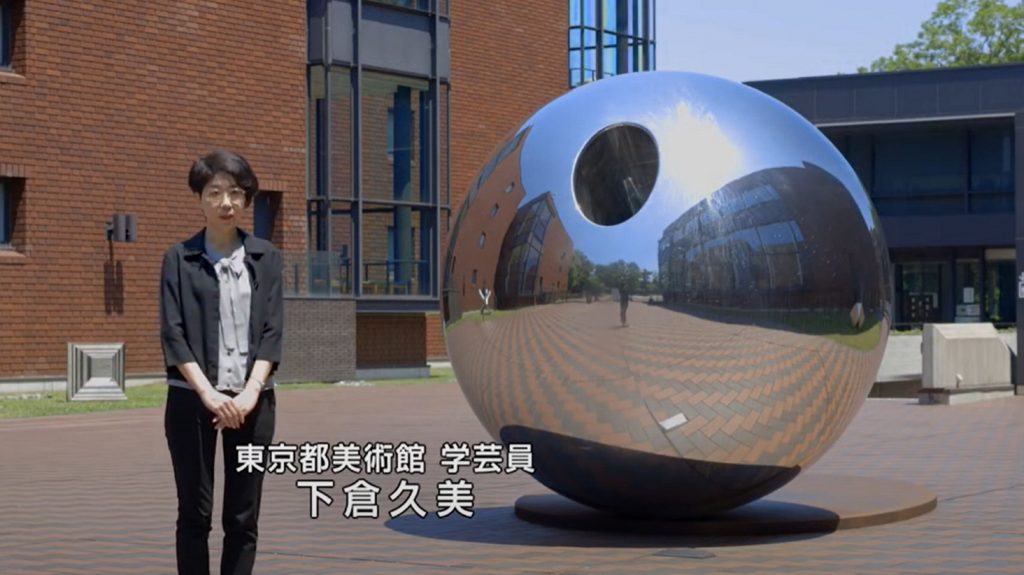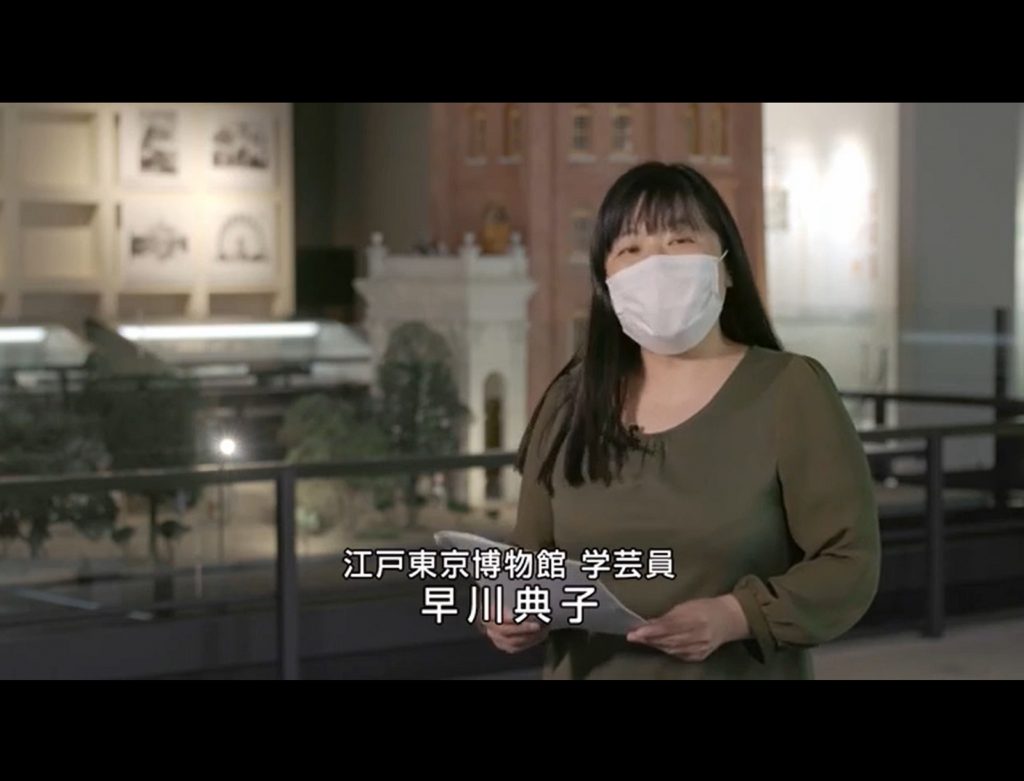
September 11, 2021
Online Presentation of “The Blue Collection” with Gratitude to Medical Personnel: Tokyo Metropolitan Foundation for History and Culture
Akiko KUSHIRO
Planning and Public Relations, General Affairs Department
Tokyo Metropolitan Foundation for History and Culture
Acting in accordance with the Tokyo Metropolitan Government’s policies to contain COVID-19, Tokyo metropolitan cultural facilities suspended exhibitions and other programs from the end of February 2020. All facilities subsequently closed to the public on April 8 when the national government declared a state of emergency. They gradually began reopening from June 1, after the declaration was lifted. Since then they have endeavored to ensure visitors’ peace of mind by taking temperatures, practicing hand sanitation, applying the Tokyo COVID-19 Mimamori Service, and taking other thorough steps to control infections.

The Tokyo Metropolitan Foundation for History and Culture is a policy-linked organization that is partly responsible for Tokyo’s cultural policy. We also operate twelve cultural facilities as their designated manager. When all of our cultural facilities closed, we could no longer provide places for in-person viewing. Nonetheless, we still thought there must ways in which the facilities can serve society even under such conditions. This led us to start providing “#CultureFromHome” as online content for enjoyment in the home on April 24, 2020.
We also wanted to acknowledge medical personnel who are engaged in the daily fight against COVID-19 and others who endeavor to maintain social activities. Focusing on the color “blue,” which has emerged as an expression of gratitude to medical personnel in the United Kingdom and other countries, we launched a website titled “The Blue Collection” on June 12.

Through “The Blue Collection,” we present videos and still images of “blue”-themed works in the collections of metropolitan museums and art galleries as well as scenes illuminated in blue. In the videos, curators full of personality and passion tell interesting stories and describe the backgrounds of works in their museums. Our assembly of a wide variety of fields–including history, art, music, and performing art–under the single theme of blue was simultaneously a display of our foundation’s advantage of scale and an undertaking to reaffirm the importance that our collections have. Some of the items presented are shown in the photographs appearing at the beginning of this publication. I hope you will have a look.
Katsushika Hokusai, Thirty-six Views of Mount Fuji: The Great Wave off Kanagawa
Shuko Koyama, a curator at the Edo-Tokyo Museum, explains how two types of blue were used in this work: honai (true indigo), which had existed in Japan from ancient times, and imported beroai (Prussian blue). In modern times, Prussian blue is also used as a medicinal drug.
Henri Rapin, Covered vase Rapin No. 21
A blue vase by Henri Rapin, who worked on the interiors of the former residence of Prince Asaka (now the main building of the Tokyo Metropolitan Teien Art Museum), which was built in 1933. Yukihide Muta, a curator of the museum, explains the work with focus on Lapin, an artist who was strongly committed to creating designs to meet his clients’ needs. The work was displayed at an exhibition titled “The 1930s–Urban Life in Modern Tokyo” (June 1 to September 27).

Anna Atkins, Gymnogramma calomelanos, Jamaica
This work was produced using a classical photographic technique called “cyanotype” (blueprint). In the video, Tetsuro Ishida, a curator of the Tokyo Photographic Art Museum, explains how it was produced. The video was used for summer vacation creativity assignments as part of a program to be enjoyed while staying at home.
In addition, “The Blue Collection” inspired a special program called “Edo-Tokyo in ‘Blue’” that took place as part of Edo-Tokyo Museum’s special exhibition “Gift from the Citizens 2020–A selection of new acquisitions from 2019” (August 4 to September 27). The fact that “The Blue Collection,” which started online, also led to an opportunity to view actual works at a real-world exhibition is a testament to the flexibility that collection curators displayed.

We also presented invitation cards to concerned organizations to help medical personnel relax and refresh themselves by viewing art. The cards are good at six museums and art galleries for a period of seven months up to March 31, 2021. We are in debt to the museums’ managers for helping make this program possible.

It seems that when we think about what can be done online to bring about “new lifestyles,” we often come back to the raison d’être of museums and art galleries in the sense of encountering real things, thinking for ourselves, and living enriched lives. The online and real-world endeavors I described here were realized through cooperation among curators, managers, and front-line facility staff members under extraordinary circumstances. We hope to continue taking advantage of the foundation’s strengths to develop one-of-a-kind initiatives.

(Hayato YASUDA)
Tokyo Metropolitan Foundation for History and Culture
The Tokyo Metropolitan Foundation for History and Culture disseminates information on arts and culture through the programs of twelve cultural facilities (Tokyo Metropolitan Teien Art Museum, Edo-Tokyo Museum, Edo-Tokyo Open Air Architectural Museum, Tokyo Photographic Art Museum, Museum of Contemporary Art Tokyo, Tokyo Shibuya Koen-dori Gallery, Tokyo Arts and Space [Hongo, Residency], Tokyo Metropolitan Art Museum, Tokyo Bunka Kaikan, Tokyo Metropolitan Theatre, and Suitengu Pit) and Arts Council Tokyo.
1-4-1 Yokoami, Sumida-ku, Tokyo 130-0015